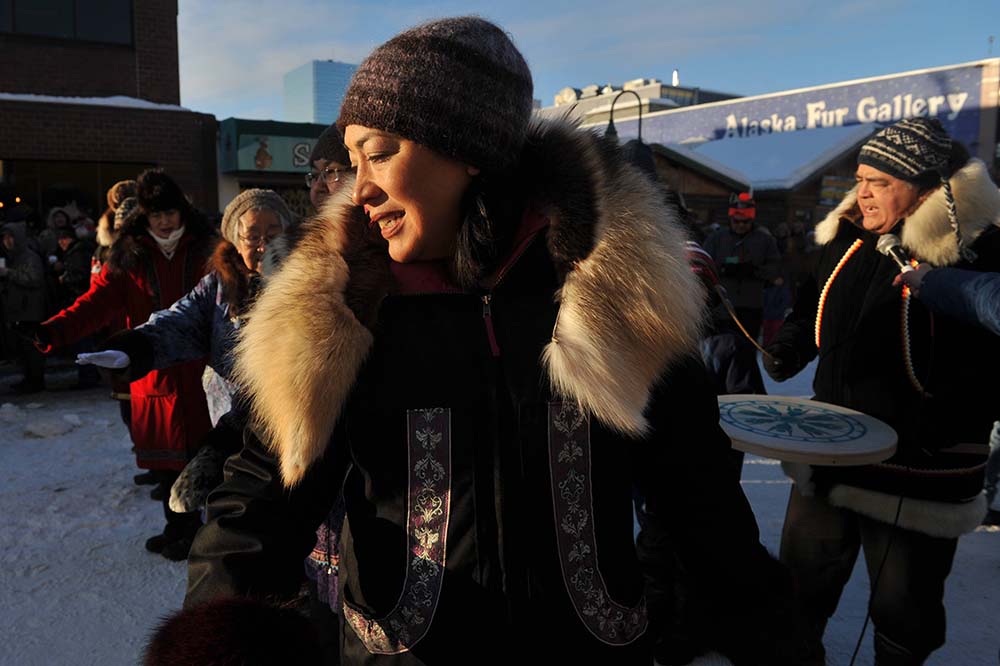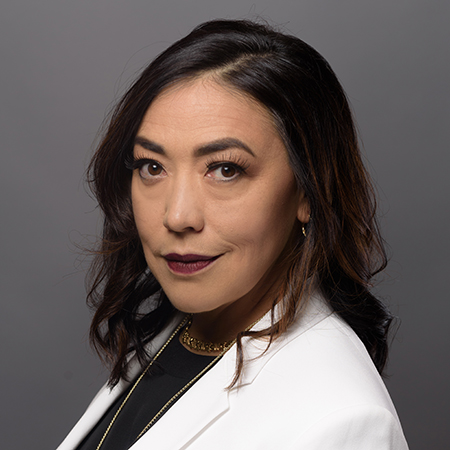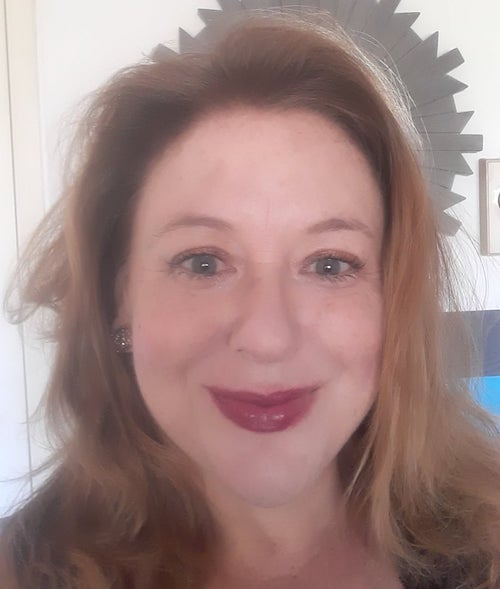
- Details
- By Tamara Ikenberg
- Economic Development
From cultivating cultural tourism to providing clean energy, new Kootznoowoo Inc. CEO and President Deborah Atuk has her work cut out for her.
At the beginning of February, Atuk (Inupiaq) took the lead at Kootznoowoo, a for-profit Alaska Native Village Corporation serving Angoon, a Southeast Alaska Tlingit community with a population of a little more than 500 people. The corporation serves 1,100 shareholders who live in Alaska and the Lower 48.
Atuk’s varied background with finance and tribal entities give her the mix of experience and skills to guide the corporation and strengthen shareholder value with projects and plans for economic diversification that also enhance the environment and cultural appreciation and preservation.
Atuk’s previous positions include portfolio specialist and institutional relationship manager at New York City-based SkyView Investment Advisors LLC, where she specialized in serving Alaska Native and American Indian clients; treasurer of the Eastern Band of the Cherokee Nation in North Carolina; and director of business development at the Colville Tribal Federal Corp. in Eastern Washington. She also currently serves as treasurer of the board of directors for Bering Straits Native Corp.
“It’s great to have someone with a business background who has worked with tribes and has a lot of energy and excitement. She’s already hit the ground running,” said Kootznoowoo board chair Melissa Kookesh (Tlingit). “The board was impressed with her background and are very excited about her being Native. We don’t have to teach her the culture of the Native community.”
Atuk said when Kookesh told her Kootznoowoo was hiring a new CEO, she was intrigued by the chance to apply and expand on what she had already learned in other Alaska Native communities to Angoon.
“They have the same principles and the same challenges,” Atuk said. “They have a community that’s off the road system that’s near to a hub where they see a lot of economic activity. They could participate in Juneau and they already do. They have real estate in Juneau and a construction company. So it was just perfect.”
Atuk succeeds former CEO Hal Dreyer, who will stay on as a consultant to get the new CEO up to speed on projects that are in progress so she can take the reins with confidence and context.
“He’s introducing her to all the players so everything is handed over smoothly and we have a good transition,” Kookesh said.
Cultural Tourism
Carving out a niche in the cultural tourism industry is one of Kootznoowoo’s main focuses.
 Deborah J. Atuk (Iñupiaq) is the new CEO and President of Kootznoowoo, the Alaska Native Village Corporation for the Southeast Alaska village of Angoon. (Yuit Communications)The corporation is making its entry in that realm with a community canoe carving project that shines a light on a treasured traditional Southeast Alaska Native artform, and allows Atuk to learn more about the shareholders she represents.
Deborah J. Atuk (Iñupiaq) is the new CEO and President of Kootznoowoo, the Alaska Native Village Corporation for the Southeast Alaska village of Angoon. (Yuit Communications)The corporation is making its entry in that realm with a community canoe carving project that shines a light on a treasured traditional Southeast Alaska Native artform, and allows Atuk to learn more about the shareholders she represents.
“I’m Alaska Native, but the Iñupiaq are not carvers. In Nome, we don’t have tall trees — we don’t even have trees,” Atuk said. “That’s not part of my culture, but I appreciate it and I believe in listening to the shareholders. The shareholders said carving a canoe would help bring the community together.”
Before Atuk came on board, Kootznoowoo enlisted the assistance of John Wunrow, who has years of experience writing grants and developing cultural tourism projects throughout Alaska Native communities, including Kasaan and Hydaburg.
Last year, he went to Angoon to engage with community members about cultural tourism project possibilities.
“The idea was to come up with an activity that would help bring the community together around a central project,” Wunrow said. “I was going around and asking people, ‘What do you think about cultural tourism and where do we start? What would people like to do?’ And several people said they would really love to have a community canoe carving project.”
Wunrow conceived a project designed not only to attract tourists, but also to nurture and support future artists, encourage healthy lifestyles, and preserve the canoe-carving tradition.
The plan is to bring Tlingit master carver Wayne Price to Angoon, where he will work with young local apprentices, including Angoon High School students, to complete a cedar canoe while community members and tourists observe the process.
“People can come down and watch and listen and ask questions and hear stories and hang out with Wayne and be part of the process, and learn through observation and conversation,” Wunrow said. “Youth and young adults will make a commitment to work with Wayne as actual apprentice carvers from the beginning to the end of the project. They have to be willing to make a commitment to not only apprentice with Wayne, but also to being substance-free during that time.”
Atuk also plans to explore more cultural tourism options.
“During COVID, there has been a small part of the tourism industry that has been recession-proof where people have been willing to travel and to go and take a long-term rental somewhere, and then do guided tours or go out and do backpacking,” she said. “We have to follow the state’s guidelines for quarantining, so you might have to extend your stay in Alaska, but that’s OK with us.”
Power plans
Cleaner air and energy efficiency are also on the agenda as Atuk takes the helm at Kootznoowoo.
Atuk is continuing work to secure the funding for the $19 million Thayer Creek Hydro Project, which Kootznoowoo has been working toward for years to transition the community from diesel generators to hydro-electric power.
Thayer Creek, where a dam is being built, is located about 6 miles north of Angoon.
“We’re working on trying to bring down the power costs and we’re trying to reduce the carbon emissions and the reliance on oil and diesel,” Atuk said “It’s good for the environment, and it’s good for the people because their air quality is going to improve.”
She said several southeast Alaska communities have switched to hydroelectric power with the assistance of organizations, including the region’s Inside Passage Electrical Cooperative (IPEC). IPEC is one of the many powerful partners Kootznoowoo is working with to secure funding.
Atuk said the hydroelectric customers will be Angoon’s nearly 400 households, the high school, and a small series of community buildings.
“We’re also planning on there being an increase in power usage because we’re working on increasing tourism,” Atuk said.
She said hydroelectric power will have a direct effect on community members’ abilities to own and operate local businesses. Currently, powering something like a freezer for a locally-owned restaurant or small hotel would be prohibitively expensive with diesel, Atuk added.
Securing employment
Providing more jobs and economic opportunities for shareholders that in turn enrich the community and the corporation is another of Atuk’s goals. Her big picture plan is to employ shareholders both in Alaska and the Lower 48 in the corporation’s subsidiary companies.
“I’m really hoping that we can increase the number of skilled jobs that are filled by shareholders,” she said.
She said COVID-19 revealed the need for stable and substantial jobs, as well as the possibilities of working remotely. Building on those concepts can help bring shareholders from all over the country into the fold.
“I’d really like to see that take-away from COVID be applied,” she said, adding that as Kootznoowoo secures more federal contracts, the shareholder employment opportunities will increase.
“At some point, Kootznoowoo will have operations all around the country as they grow their federal contracting,” Atuk said. “We should be able to fill some of those jobs with shareholders eventually.”
Atuk said there will be a wide gamut of job opportunities, from engineering to accounting, to project management and computer programming.
The full potential of virtual working and learning, particularly for shareholders in remote rural locations, will require some major infrastructure improvements throughout the state.
“One of the disparities that we’re seeing in high relief is that our rural communities need better broadband connection and higher rates of connectivity to stay to stay on par,” Atuk said. “We can use our voice and our advocacy to speak to the powers that be to make sure that the communities get their needs served.”
Educating and encouraging the next generation to work toward enriching and empowering Alaska Native communities is also high on Atuk’s priority list.
“I am very excited to talk with any young people who are shareholders or descendants to talk about my experience going outside and getting an education and coming back to Alaska to work for the corporations,” she said. “I believe that a rising tide lifts all boats, and I really like the idea that we can take advantage of the educational benefits that the corporation provides, and have shareholders come back and apply their higher education.”
